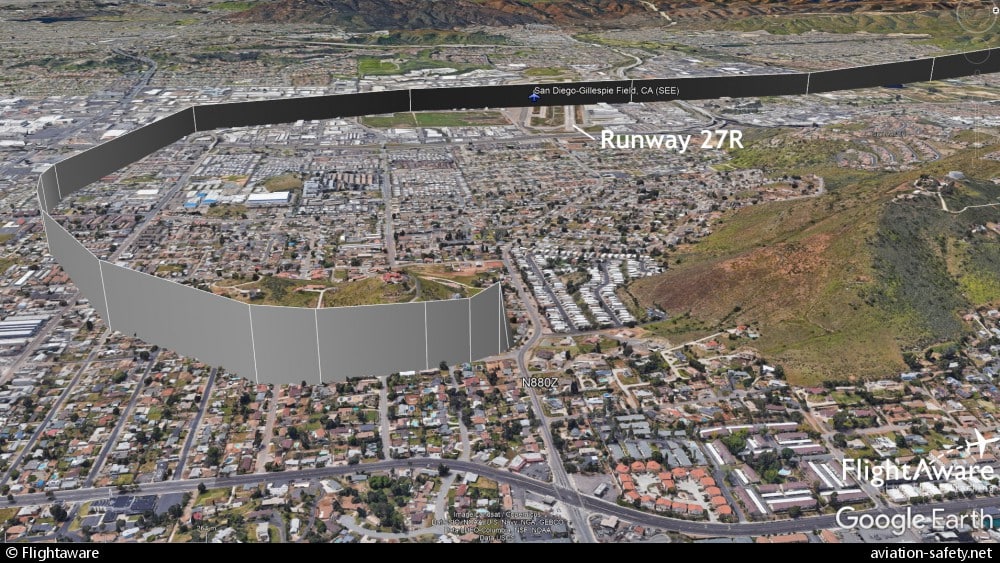NEAR MISS AT NON-TOWER AIRPORT POINTS UP THE NEED FOR A BETTER GARMIN TCAS
NEAR MISS AT NON-TOWER AIRPORT POINTS UP THE NEED FOR A BETTER GARMIN TCAS
I thought I would share an experience I had Friday December 17th at the Macomb, Illinois airport. I have used that airport, an uncontrolled field, for the past 11 years enroute to California from Philly.
It is in the open with no obstacles, a 5000 foot runway in good condition, two GPS approaches and reasonably priced fuel.
I was approaching the airport with Chicago Center who advised me of an airplane maneuvering miles Southeast of the field which I saw on TCAS.(Traffic Collision Avoidance System). I gave a wide berth and joined the downwind announcing my position and intentions to land on Runway 09. I turned the base leg and announced that position. I then turned final and heard another pilot announce he was downwind which also was confirmed on the TCAS.
I then cautioned that aircraft by radio that there was a HondaJet on final for runway 09. I made yet another broadcast that I was on short final. Out of the corner of my eye I saw an aircraft at my altitude crossing directly in front of me. We missed each other by feet!
There was no TCAS warning and no avoidance maneuver (Resolution Advisory) suggested.
I landed moments later and taxied to the fuel pump. I was met with a line serviceman who said, “I thought I was seeing a midair collision.” He confirmed he heard all my transmissions and pointed out the flight instructor and his student standing on the ramp who had obviously landed behind me while I was still on the runway.
I walked up to the instructor and his student who were still standing by the airplane and the instructor said to me, “I guess I owe you an apology.” I gave him what for, like who has the right of way and what was he thinking and everything else I could think of that was as elegant as I could be without saying how I really felt about what he did. He admitted he heard all my transmissions. Okay, I’ll get over it. I admit that I was more pissed than shaken then but it brings up something that is worth articulating.
No matter how careful you are. No matter how strictly you follow the rules. No matter how much you want to live and enjoy the good fortune that has blessed you, there will always be some moron who doesn’t give a crap. If he is a flight instructor, not a kid but an experienced adult, it is even more unforgivable.
The near miss I had was one second and seventy-five feet from collision as confirmed by FlightAware. The reason I got no traffic advisory or resolution advisory was because I was already so low on final and the other aircraft was so close, it was literally beyond the capability of the system to generate either of those.
So lessons learned is to not be complacent that the TCAS will end the risk of mid-air collision, it won’t. The other lesson is there is no substitute for your eyeballs and looking outside especially close in may be the difference between life and death.
Now to be honest, this happened so fast I didn’t have time to react so even though I saw the other aircraft 1 second away there was nothing I could do except be astonished after he whizzed by.
I am still processing all this and if I have any useful suggestions I’ll make them. I guess the only one that makes sense right now is no matter how comfortable you are that no one would be so reckless as to cut you off while you are almost at the threshold, such people do exist so don’t assume you’re safe until you’re on the ramp.
- TCAS ‘TA’ – N420LH was below 2000′ AGL (on final approach) and the intruder aircraft closing rate provided less than 15 seconds of separation or intruder range is within 0.2 NM.
- TCAS ‘RA’ – RA is not issued below 1000′ AGL
- This can all be found in the Garmin Manual which specifies the limits of operation of the TCAS 1 and TCAS 2 systems.
- Having said that, none of it means beans until it happens and then if you live, you get a chance to read it and you find out why what you thought should happen didn’t.
- ‘TA’ means traffic advisory audible “Traffic, Traffic, Traffic”
- ‘RA” means resolution advisory like “Climb”
Airline pilots have the benefit of TCAS that will give traffic alerts and resolution advisories all the way to the ground. The Garmin system leaves a pilot vulnerable when he needs the protection most, in the traffic pattern close to the ground.
This must be fixed!
Arthur Alan Wolk
December 29th, 2021
For more commentaries click here.


